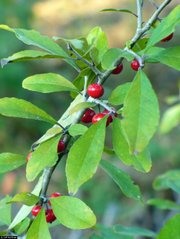Q I'm covering lavender, rosemary, roses with porous plant covers when the really low temperatures are predicted. The lavender and rosemary are large bushes and are looking good. My ajuga and creeping jenny aren't looking good, and the pansies and other winter annuals look pretty sad. Should I start cutting them back now or just pull them up and be done until spring?
A Winter is just beginning so we have a lot of potential weather left. At this point, I would ignore your ajuga and creeping jenny. Ajuga should be evergreen, but creeping jenny is deciduous and does die back each winter. The winter annuals may have some damage but should bounce back. You can cut back damaged foliage on the Swiss chard, mustard and kale, but then be prepared to cover the rebounding plants if they start growing again. They should do OK unless temperatures dip much below 28 degrees. How much growth we see on these plants will be determined by what else Mother Nature has in store.
Q I have a north-facing slope measuring about 15 by 100 feet, probably 75 percent shaded, and I am interested in cleaning up the weeds, poison ivy, privet and various other volunteers and planting a ground cover that is dense and low to the ground. Also we need to take into account all the leaves that the fall presents me with from multiple dogwoods, red buds, hackberry and a very mature water oak. Any suggestions?
A There are several options. Moss would be a great option -- it gives you a green blanket, and you can walk on it. You can blow the leaves off a moss ground cover with no problems each fall. You can also plant ajuga, Asiatic jasmine or any number of other ground covers. This is a large area that you are planning on covering, so I would do it in stages. Do a thorough job of cleaning up a small area, then plant. Each year you can spread out the area and gradually get it planted, and control the tenacious weeds. Privet and poison ivy are tough performers.
Q Is the deciduous holly you wrote about recently the same thing as what I know as "possum haw"? Are they available at local nurseries?
A There are actually two species of deciduous holly plants and, unfortunately, common names are used interchangeably. The two species are Ilex decidua and Ilex verticillata. Ilex decidua is the plant most commonly referred to as possum haw. Birds, deer and a variety of small mammals including possums (which could be the source of the common name) are attracted to the fruit. These native hollies have a lot of genetic variability and thus you can find red-, orange- and yellow-berried varieties. The most common selection we find at local nurseries is "Warren's Red" but you can also find the orange/red berried "Council Fire" and "Byer's Gold" with yellow berries. Some of the Ilex verticillata varieties in the trade are "Red Sprite" and "Berry Poppins." Female plants are the ones with the showy fruit that we see along the roadsides right now.
Q We have a large corn plant in our lobby that is at least 6 feet tall. We recently repotted it in a larger pot and noticed that it grew seeds. Recently it bloomed with small flowers with a lovely fragrance. Now the flower petals are dropping to the floor and it's quite sticky. What is this and why did it bloom? The people we visit with say they have never seen this before.
A Many houseplants have the capability of blooming in their native environments. In the low light conditions of a typical home or office, we rarely see blooms. There are a few plants that frequently do produce flowers. The corn plant dracaena is one, along with jade plants and the sanseveria or mother-in-law plant. It means you have some really good growing conditions for the plant. We often find that once the plants begin to bloom, they do so every year. The fragrance is quite sweet and can be a bit cloying in a very small space. The fragrance tends to be more intense at night. Enjoy it while it blooms.
Janet B. Carson is a horticulture specialist for the University of Arkansas Cooperative Extension Service. Write to her at 2301 S. University Ave., Little Rock, Ark. 72204 or email her at
jcarson@arkansasonline.com
HomeStyle on 01/13/2018

